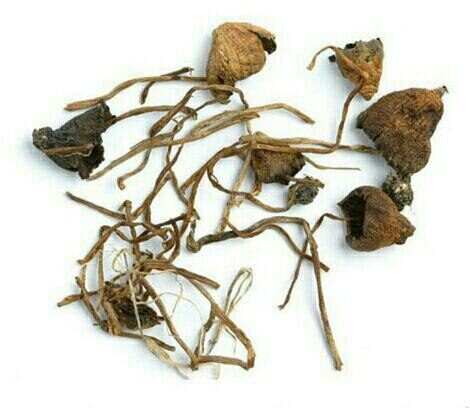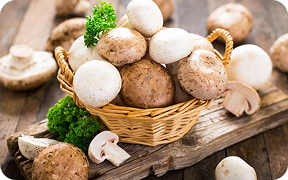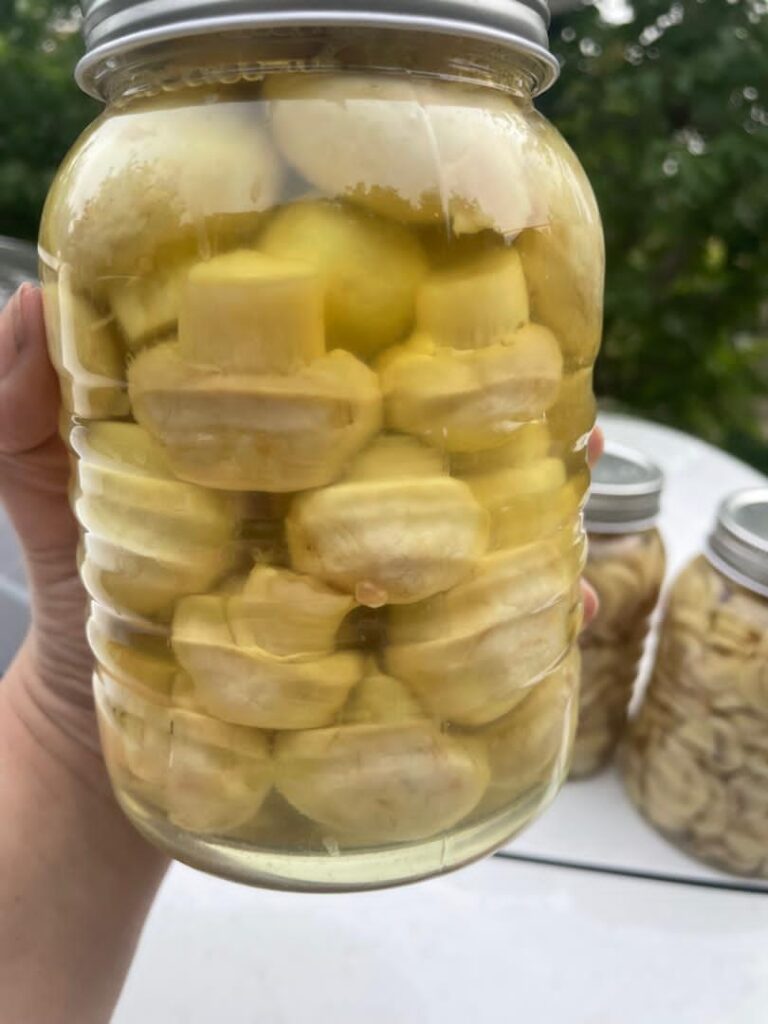What is Magic Mushroom?
What is a magic mushroom?
Magic mushrooms are a psychoactive substance that, due to certain compounds such as psilocybin, have very strong effects on the nervous system and mental states of a person. These mushrooms can cause many changes in emotions, perception, and also create hallucinations, which sometimes cause serious physical and psychological consequences.
Given the potential dangers and unpredictable effects of this mushroom, it is of great importance for people who are faced with this issue to be aware of its side effects, nature, and methods of quitting. In this article, we intend to introduce you to magic mushrooms, how they work, symptoms of use, and the psychological and physical side effects of their types.
In this article, we also intend to answer your important questions, such as whether this mushroom is addictive and how to quit. We suggest that you join us in this article to gain a clear perspective on magic mushrooms with scientific and accurate information and, if necessary, learn about appropriate quitting strategies.
What are magic mushrooms?
Magic mushrooms are a type of mushroom that contain natural psychoactive compounds called psilocybin and psilocin. After consumption, these compounds are converted into active substances in the body that affect the brain and cause changes in a person’s emotions, perception, and thinking.
Magic mushrooms are usually consumed fresh or dried and are used as a sacred or medicinal mushroom in some cultures due to their hallucinogenic effects.
However, the use of these mushrooms can also come with risks. The effects can range from extreme anxiety, euphoria, frightening hallucinations, and increased creativity to long-term psychological problems. Therefore, it is important to fully understand this mushroom and be aware of the side effects and risks of its use, especially for those who are exposed to or dependent on it.
The different types of magic mushrooms are as follows:
There are many different types of magic mushrooms, each with their own unique properties and ingredients, but they all contain the psychoactive compounds psilocin and psilocybin. These mushrooms can grow in different parts of the world, and depending on the type of mushroom, the level of effectiveness and intensity of their hallucinations will also vary. The most common types of magic mushrooms include:
- Psilocybe cyanescens Wavy Cap Mushroom
This mushroom grows in temperate and forested areas and is also known for its high psychoactive power. Its appearance features are wavy caps and a blue-gray color, which is referred to as the “Wavy Cap”. - Psilocybe semilanceata, also known as the “ Liberty
Cap,” is one of the most potent and smallest types of magic mushrooms. It grows in grasslands and temperate regions and requires more caution and precision when consumed than other mushrooms due to its hallucinogenic power. - Psilocybe azurescens This type of mushroom
is known as one of the most powerful magic mushrooms and is usually found in the coastal regions of the northwest of the United States. Its effects are very long-lasting and intense, which makes its use more dangerous. - Psilocybe cubensis is
one of the most common and well-known types of magic mushrooms, growing in subtropical and tropical regions. This type of mushroom has relatively strong psychoactive effects and is usually medium in size. Due to its ease of growth and abundance, most users prefer this type of mushroom.
After consuming magic mushrooms, a person typically experiences several different stages, each with its own unique characteristics. These stages vary in time and intensity of effects, and understanding them is essential for any user to better manage the experience (Set and Setting).
Initial phase (beginning of effects)
The first symptoms appear about 20 to 40 minutes after consumption. This is called the onset phase, and its severity depends on factors such as the amount consumed, the person’s metabolism, and the contents of the stomach. During this time, the person may feel excited or anxious and notice changes in their perception of time, colors, and sounds. These conflicting feelings (excitement versus anxiety) are common in many users as the body and mind prepare to enter an altered state of consciousness. Changes in environmental perception include brighter colors, hearing ambient sounds with greater clarity, and a feeling of heaviness or lightness in the limbs.
Peak Experience
This is the most vital and intense part of the experience, usually occurring between 1 and 3 hours after consumption. During this phase, visual and auditory hallucinations are at their peak and the person may feel a sense of oneness with their surroundings.
Common experiences during the peak phase :
- Complex visual illusions : seeing geometric patterns (such as mandalas), flowing landscapes, and changing shapes of stationary objects.
- Deep psychological experiences : Some people in this state feel a sense of peace and deep connection with nature, the world, or their true selves. This state is often accompanied by profound philosophical or personal insights.
- Challenging experiences : In contrast, others experience fear, extreme anxiety, or a “bad trip,” which can include feelings of paranoia, loss of identity, or unwanted exposure to repressed memories.
Decline phase and end of effects
After about three hours, the effects begin to wear off and the intensity of the hallucinations and perceptual changes diminish. This is the comedown phase and usually lasts between the third and sixth hours. The main effects usually wear off after four to six hours , although in some cases minor effects or mental “aftershocks” (such as slight changes in color perception or lightness) can persist for up to 12 hours .
Understanding these stages helps people cope more easily with physical and mental changes and, if needed, take the necessary steps to maintain their peace and safety.
The active ingredient in magic mushrooms is called psilocybin , which is a natural psychedelic compound.
Chemical conversion and effect on the brain
Psilocybin is not active on its own; rather, after entering the body, especially in the liver, it is converted by digestive enzymes into the main active ingredient , psilocin .
Psilocybin is structurally similar to the natural neurotransmitter serotonin. It acts on serotonin receptors in the brain, specifically the 5- HT2A serotonin receptor . Overactivation of these receptors changes the way nerve cells communicate. These circuit changes lead to widespread changes in a person’s perception, emotions, mood, and thought processes. Research has shown that psilocybin reduces activity in the brain’s Default Mode Network (DMN), a network associated with self-awareness, thinking about the past and future, and maintaining identity. Reduced DMN activity can lead to experiences such as “ego dissolution” and a sense of oneness.
Timeline of impacts
The effects of this fungus appear as follows:
Phase Time after use Main characteristics Onset of effects About 20 to 40 minutes Appearance of the first sensory and emotional changes or peak effects 1 to 3 hours after use The most intense visual and emotional hallucinations Gradual decrease from the third to sixth hour Gradual decrease in the intensity of the experiences End of the main effects About 6 to 8 hours after use Return to normal consciousness Mild effects remaining for up to 12 hours Fatigue or minor cognitive changes
Magic mushrooms can cause a variety of physical and psychological symptoms that usually appear within half an hour of consumption and last for several hours. The severity of these symptoms depends entirely on the dose and the individual’s sensitivity.
Psychological and cognitive symptoms
These symptoms are rooted in changes in how the brain processes information:
- Changes in perception of color, sound, and space : Colors appear much more vivid, depths change, and sounds may become “visual” (synesthesia or mixed senses).
- Visual hallucinations : From simple patterns to very complex, moving scenes. Auditory hallucinations are less common but may include hearing whispers or music in the background.
- Changes in perception of time : Time can pass very slowly or very quickly.
- Decreased concentration and judgment : The person’s ability to perform complex tasks or accurately assess the environment is severely reduced.
- Mood swings : Rapid swings between extreme euphoria, deep calm, and sudden anxiety.
Physical symptoms
Physical symptoms are usually milder but should be noted:
- Feeling of lightness or weightlessness : A feeling of floating or being detached from the body.
- Mydriasis : This is a common physiological reaction to psychedelics.
- Digestive problems : nausea, feeling of stomach discomfort and in some cases vomiting (especially at the beginning of the experience).
- Dry mouth : decreased saliva production.
- Changes in cardiovascular function : increased heart rate (tachycardia) and temporary increase in blood pressure.
- Restlessness or slight tremor .
These symptoms usually resolve after a few hours, but managing environmental conditions (Set and Setting) is vital to prevent mild symptoms from turning into larger problems.
In addition to the expected mental changes, the use of magic mushrooms, especially in high doses or by susceptible individuals, can cause numerous physical and psychological problems, some of which can be emergencies.
Short-term complications (during the experience)
These side effects are related to the chemical effect of the substance on the autonomic nervous system:
Physical side effects :
- Digestive problems : Nausea and vomiting, which are sometimes severe and can lead to dehydration.
- Blood pressure and heart rate : Temporary increases in blood pressure and heart rate can be dangerous for people with a history of heart problems.
- Dizziness and imbalance : Risk of physical injury due to inability to maintain balance.
- Excessive sweating and increased body temperature : Although severe heatstroke is rare, body temperature regulation is disrupted.
- Headache : A mild headache is usually reported after the effects wear off.
Acute psychological complications :
- Severe anxiety or fear (Bad Trip): This is the most common psychological hazard, which includes intense feelings of paranoia, a sense of impending death, and disturbing hallucinations (such as vivid nightmares).
- Feeling of losing control of the mind : This state can lead to irrational or dangerous behaviors.
- Impaired judgment : making poor decisions that can endanger the health of the individual or those around them.
Long-term effects (post-use)
Some side effects may persist or appear with a delay even after the drug has worn off:
- Psychedelic-Induced Persistent Perception Disorder (HPPD): This is a rare disorder in which a person experiences persistent flashbacks, seeing halos or light trails around objects (visual snow) after weeks or months of use, which can be very disturbing.
- Onset of psychosis : In people with a family history of psychotic illnesses such as schizophrenia, the use of psychedelic drugs can accelerate or initiate a period of psychosis.
- Persistent depression or anxiety : Some very traumatic experiences can cause persistent anxiety symptoms after use.
For this reason, consuming this mushroom in inappropriate circumstances (unsafe environment, company of unreliable people, or fragile mental state) can be very dangerous.
The issue of magic mushroom addiction should be examined from both physical and psychological perspectives.
Physical dependence
In general, psilocybin does not cause physical dependence ; that is, stopping use will not cause severe physical withdrawal syndromes like those that occur with alcohol or opiates. The body does not become addicted to it, and there is no specific physical withdrawal observed after stopping use.
Psychological dependence
The important thing about magic mushrooms is the potential for psychological dependence . Some users may resort to repeated use to re-experience those feelings, to experience supposed profound insights, or to escape the unpleasant realities of life. This psychological dependence can lead to repeated use and the formation of unhealthy habits, even if physical withdrawal symptoms are not present.
Tolerance : Another thing to note is that the body quickly develops a tolerance to psilocybin. This means that to achieve the same effects, a person must take higher doses, which increases the risks of toxicity and side effects. This high tolerance mechanism naturally prevents daily use, but psychological dependence is still a serious concern.
If such a situation (a strong and uncontrolled desire to consume) occurs, it is better for the person to seek help from a psychologist or a professional counselor to control the desire to consume and identify its internal causes.
Since there is no physical dependence on magic mushrooms, the withdrawal process is more psychological in nature and focuses on managing temptation, changing attitudes toward use, and restoring mental health.
Main treatment approaches
Quitting this substance requires more psychological support than physical treatment. The best way is to visit counseling centers or addiction clinics specializing in behavioral addictions.
1. Cognitive-behavioral therapy (CBT): In this approach, the person is taught to identify and modify unhealthy thoughts and beliefs related to use (such as the idea that “I can only understand the meaning of life with mushrooms”). They are also taught skills for coping with temptation and managing stress without using.
2. Supportive and exploratory psychotherapy : Therapists use conversation to help the person discover the underlying reasons for their tendency to use drugs. These reasons may include unresolved issues, past traumas, or attempts to escape life’s responsibilities. The goal is to address the root causes of the problems so that the need to escape through use disappears.
3. Strengthening Motivation : It is very important for the person to develop a strong motivation to quit. This includes setting new healthy goals, regaining social and professional roles, and focusing on the benefits of a drug-free life .
Supplementary supporting factors
- Support groups : Attending groups with people with similar experiences reduces feelings of loneliness and provides necessary social support.
- Family support : Educating the family about the nature of psychological addiction and creating a non-judgmental and supportive environment for the recovering individual is essential.
- Lifestyle changes : Encouraging exercise, healthy eating, and activities that naturally activate the brain’s reward system (such as art or meditation) can provide a safe alternative to seeking out extreme experiences.
If there is severe mental or psychological dependence, referral to professional treatment centers familiar with the management of possible psychosis is necessary.
Magic mushrooms are a psychedelic mushroom that contains psilocybin, which can dramatically alter emotions, perception, and time. These changes are caused by the active ingredient’s effect on serotonin receptors in the brain, resulting in a multi-stage experience (onset, peak, decline) that typically lasts 6 to 8 hours.
Although this substance does not cause physical dependence, its mind-altering power and potential for unpleasant hallucinations (bad trips) or long-term effects such as HPPD threaten the mental and physical health of the individual if used without knowledge and control. The risks include severe anxiety, panic attacks, temporary increases in blood pressure, and in sensitive cases, the stimulation of latent psychotic illnesses.
It is possible to overcome addiction to magic mushrooms with the help of counselors and specialists through psychotherapy approaches (especially CBT), as the main focus is on modifying thought patterns and managing temptation. Dr. Javadi’s addiction treatment clinic, with the help of experienced specialists, can accompany people on this path to return to a healthy and controlled life.
1. When do the effects of magic mushrooms start and how long do they last? Symptoms usually begin about 20 to 40 minutes after consumption. Peak effects occur between 1 and 3 hours and usually last 4 to 6 hours . Minor effects may last up to 12 hours .
2. What is the legal status of magic mushrooms in Iran? The purchase, sale, distribution, and consumption of magic mushrooms (containing psilocybin) is illegal in Iran and is subject to drug laws and is subject to legal prosecution.
3. What are the most important short-term side effects of magic mushroom use? Common short-term side effects include severe perceptual changes (hallucinations), severe anxiety or fear, nausea, increased heart rate and blood pressure , dilated pupils, and serious impairment in concentration and judgment.
4. Can using this mushroom cause addiction? No, it does not usually cause physical dependence. However , due to the nature of the strong mental experiences, psychological dependence and repeated use due to habituation to those states are considered a risk.
5. How long does it take for the main effects to wear off? The main effects usually subside completely after 6 to 8 hours and the person can resume their daily activities, although feelings of fatigue or deep thinking may persist for up to 12 hours.





